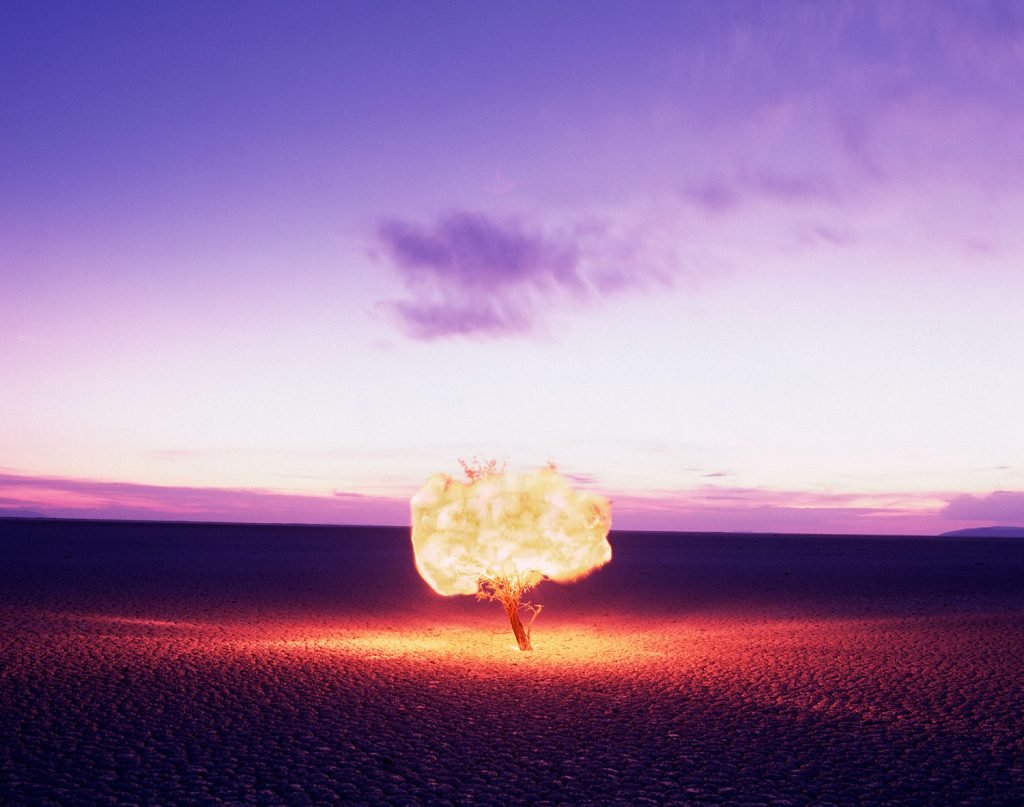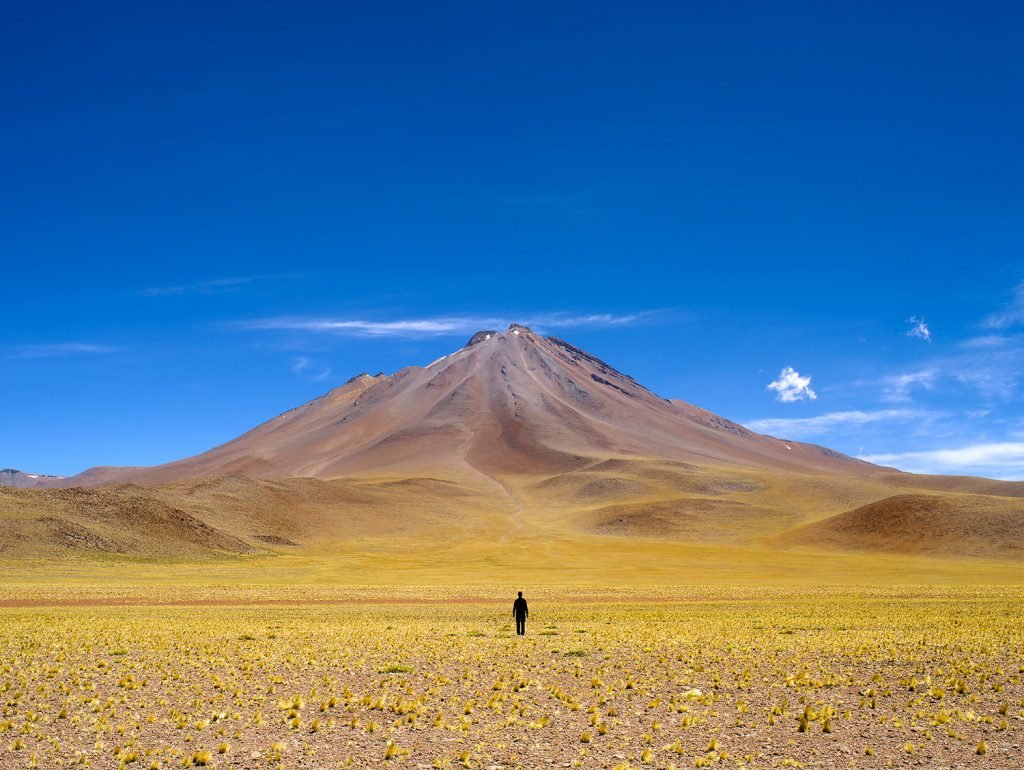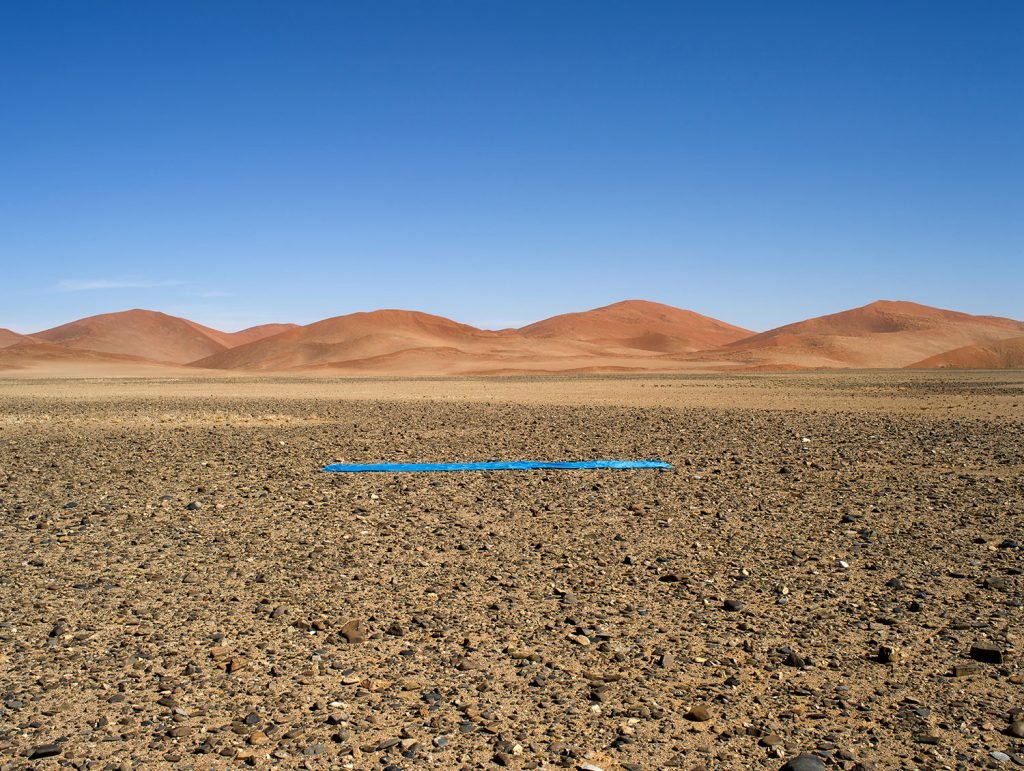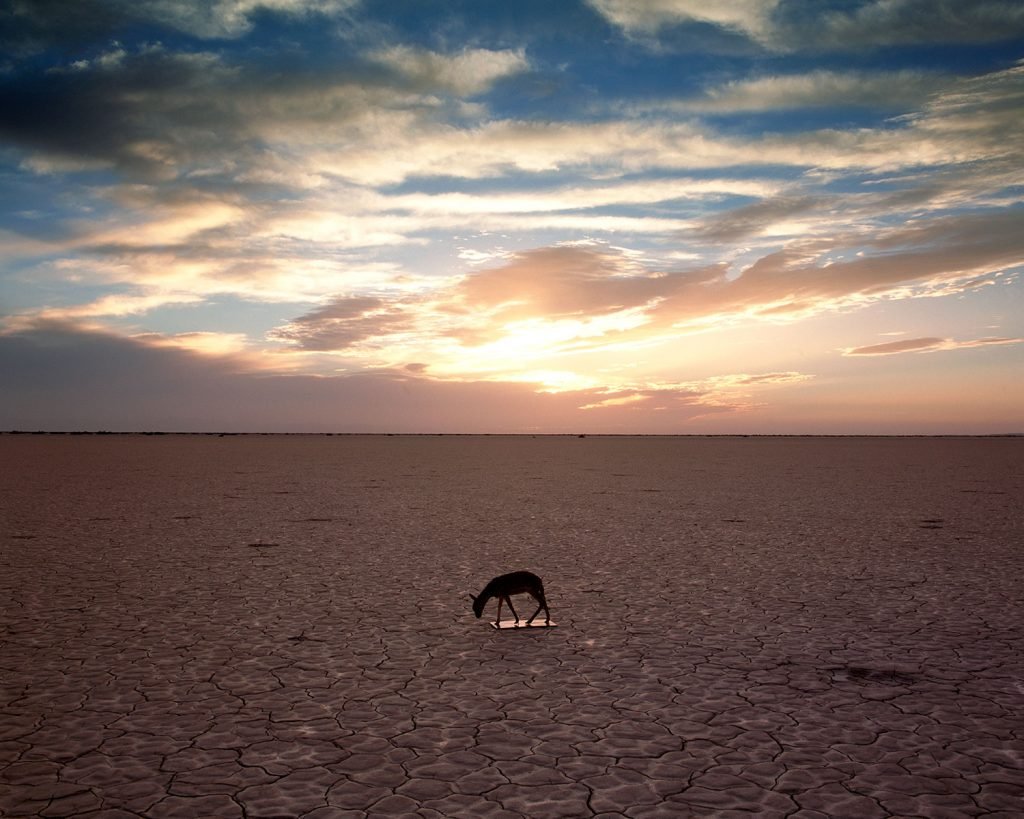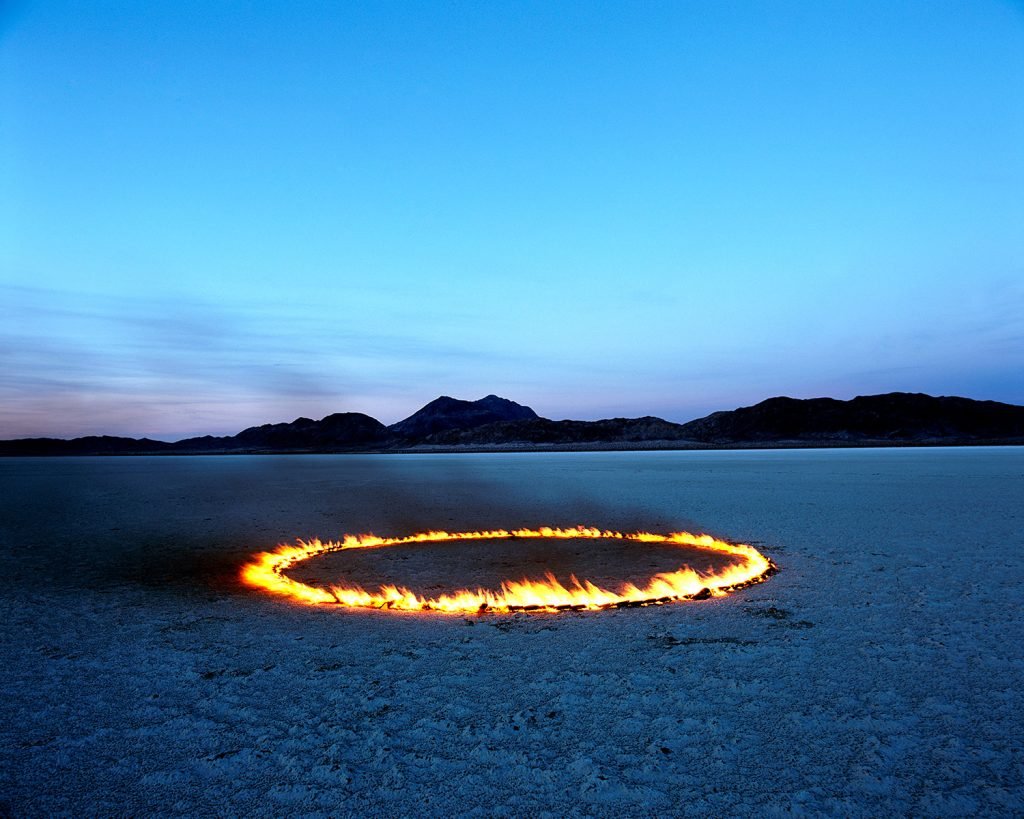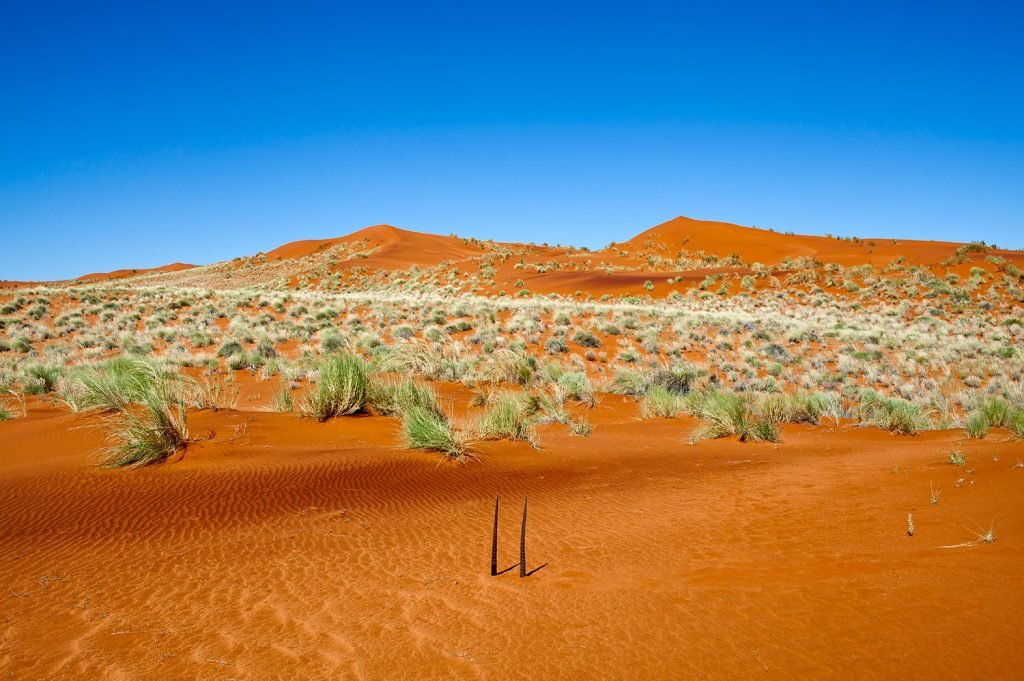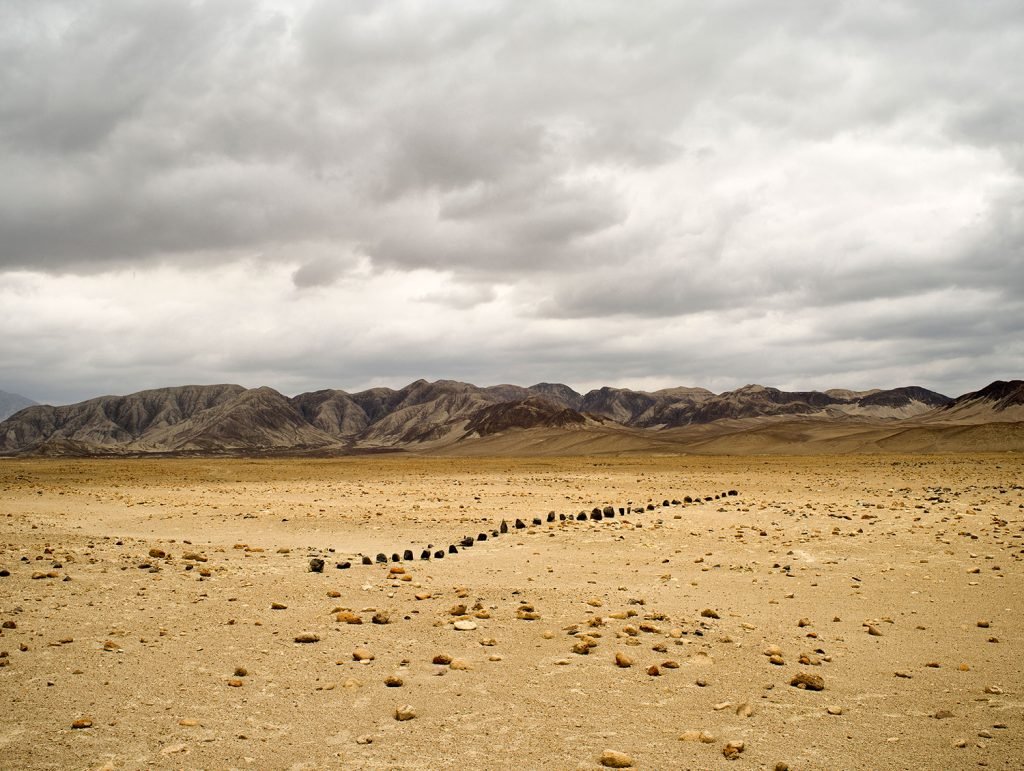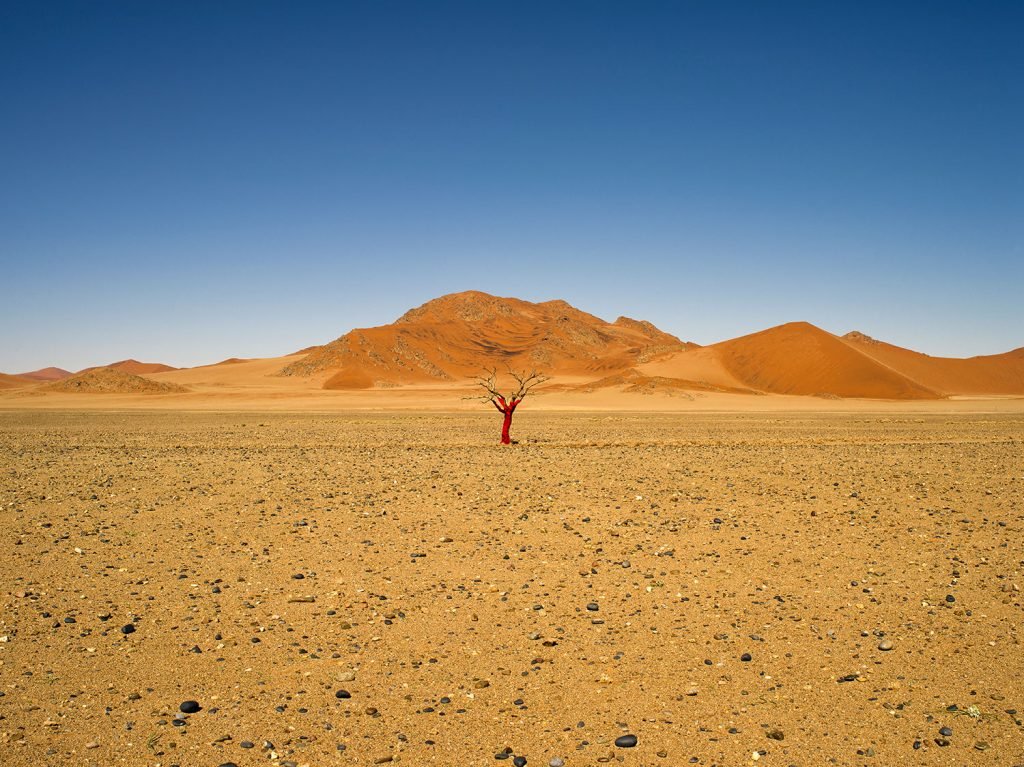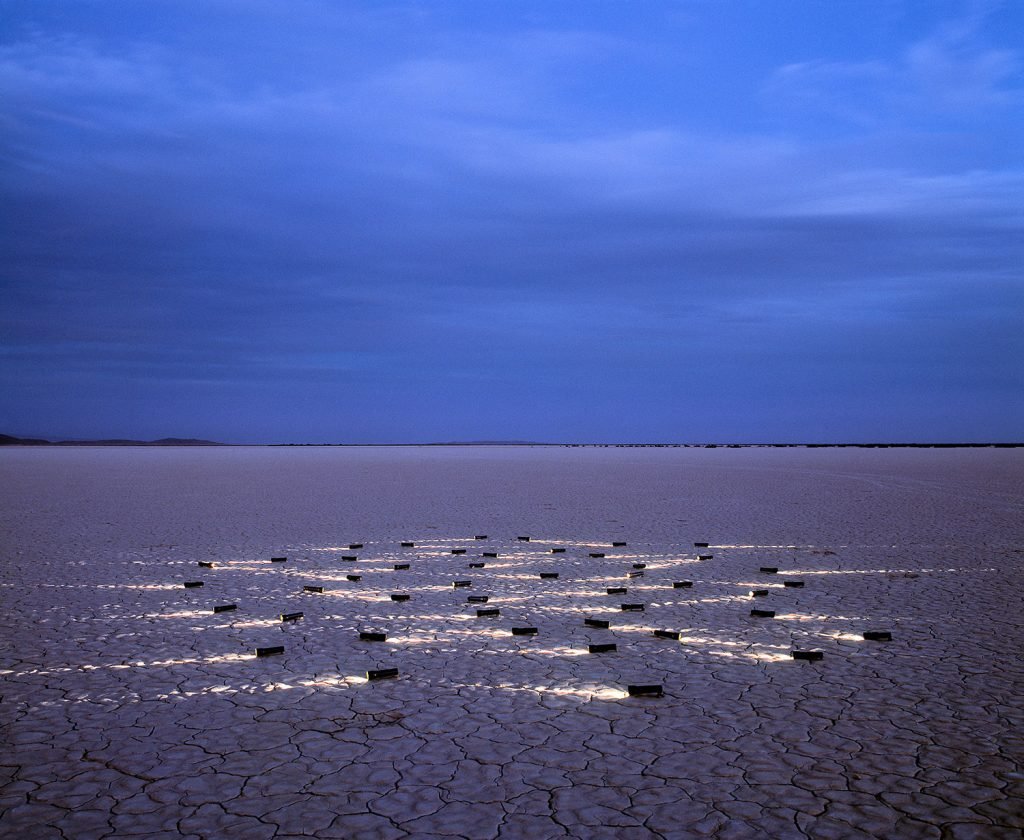Giangiacomo Cirla: Hello Alfredo, It’s never easy to start an interview with a person so involved in contermporary artistic dynamics as you are. I’d like to talk with you on may issues and I think the best solution is to start and then see where the conversation will end up. So, I ask you what role has , and has had, photography in your life?
Alfredo De Stefano: Photography has been in my life since I was a university student but years later it became my way of life, first as a photographer of architecture and fashion and later as an artist. Photography has given me everything professionally and has taken me to the most exotic and extreme deserts of the planet and has also been exhibited internationally in many galleries and museums. At this point of my life it´s very difficult for me to imagine what I would have done instead of being an artist of photography.
GC: Talking about the desert, what brings you to those places and what attracted you so much to make them subject and context of your artistic work?
ADS: The desert exerts on me an inexplicable force of attraction. That is why I return to it again and again. They are spaces so huge, so extreme, so apparently empty that in the middle of the sometimes oppressive vastness of the desert, I build intimate spaces to photograph them, as metaphors about the desertification of the planet caused by man, or as metaphors about life and the death of the cultures that inhabit them and others function as ironic allusions to our relationship with the desert.
GC: dealing with such a complex territory, how is your working practice organized?
ADS: Planning trips to these distant places requires complex planning and logistics that normally take me several months to achieve. For me the most important thing is to find the right landscape that I can intervene and a reliable guide who knows the desert very well. In my last project (Storm of Light), everything was more difficult because a documentary was also being filmed.
GC: What is your relationship with the medium of video?
ADS: Since my first works the video has been part of my work but in recent years with the arrival of HD, 2K and 4K technology in the DSLR cameras I have made more videos. Very recently I started a new project where I use drones making videos in a different way to how images are usually made with these devices.
GC: can we say that your work has in multidisciplinarity one of its primary characteristics, developing through performative acts, land art, video and photography?
ADS: In effect, as you say, my work is very multidisciplinary in its process although most of the time the final result is a photograph.
GC: this “contaminated” work methodology is also found outside your practice as an artist, I’m thinking about your work as a curator…
ADS: I don’t know if the word “contaminated” is the best way to describe my method of work, rather it is the way I build my photographic language. What is correct is your appreciation, I have transferred this method to my way of working as a curator and cultural manager. I studied communication and marketing and years after finishing University I decided that I wanted to be a photographer. The world of marketing taught me to have a more open and constantly changing vision of the world, and that way of working has led to the promotion of photography. The world of photographers is very divided by guilds, sor to speak: photojournalists, fashion photographers, fine art, conceptualists, documentalists, etc, etc and most of the time among themselves they do not understand themselves as artists even though they use the same instrument to communicate. I like to mix these different ways of working and get to know each other through festivals, exhibitions, contests or social networks.
GC: I agree with what you say, especially talking about networks and guilds. I think we are in a time in which there is more and more need for sharing thoughts, experiences and projects. Everything today is facilitated by technology. I’m still trying to figure out if this is totally a benefit… I am concerned about the consequences on identities.
ADS: We could say that an important part of the inhabitants of the planet communicate through images and with short texts, but doesn´t mean that they understand the language of photography. Like any change of paradigms, in this case the way to communicate, has its benefits and will have consequences. Will there be loss of identities? Probably not in the near future. What does exist and is already a real problem, is the huge amount of fake news that is having consequences in people and communities. Ignorance always accompanies technological and scientific changes, that is why people tend to take for granted all that is published without bothering to confirm it with other sources. In the specific case of photography, there are many plagiarism and copies of styles of the same way of photographing. I tell my students, that technology allows you to film a movie with a mobile device or you can buy any type of camera online without leaving your home, but paradoxically, now it´s more difficult to be a photographer or visual artist.
GC: This is a really important issue to which I’m really interested in. The power of fiction and the easy malleability that visual communication possesses is often underestimated. Nowadays that images are a large part of our daily communication, an education to the gaze and to the reading of the image becomes as important as the technological and scientific one. From this perspective I think that Art, understood as training in visual language, is the best way to educate…
ADS: Art and the way of being able to understand it in all its expressions should be part of all the textbooks that children and young people bring to school, but unfortunately it has never been like that. Art in general tends to be a form of rebellion, is irreverent many times, is controversial and questions the historical moment in which it was made. That education has historically never liked politicians and their governments. I agree with you that art as a visual trainer would be one of the most beautiful ways to educate and in that part photography is fundamental. For better and for worse, the photography and visual information that comes to us every day through our smartphones is educating us and that is already out of control of practically any form of government.
GC: In this regard, don’t you think that one of the contemporary artistic problem is that art is becoming less and less a form of rebellion and irriverent? The pursuit of the dream of an art market is making many artists free of fighting spirit?
ADS: Of course, the production of art stopped being a form of rebellion, is almost no longer irreverent. Now many artist want to make an art that seeks acceptance and immediate success. The excess of art fairs that exist throughout the world has impacted on the production of a good art. Many artists of all disciplines feel that they do not exist if they never present their work at a fair. They produce less committed art, perhaps technically virtuous but without conceptual content so the collector doesn´t have a problem exhibiting it at home and the gallery can sell it more easily. The collectors and museums that buy serious art is very small compared to the occasional collectors who only buy to decorate their houses, but even so, there is an enormous offer of art for so few buyers and that has generated the production of that art complacent or to put it another way; aceptic. Obviously there are still many, many great artists, with a committed language, but more often they are less and less.
GC: Let’s talk about your role as educator, what are your main interests in those slacks and what are the strenghts of this job?
ADS: I do not consider myself an educator in every sense of the word, I do not teach regularly in the university or schools, but my role as an educator is to give workshops, give lectures, review portfolios and in some way, when organizing a Photography Festival you also share your knowledge with many of the attendees. My interest in the teaching of photography and its history is to create bridges of communication between different cultures or communities, the camera is the only tool of art that everyone, without being an artist, uses it every day, consciously or unconsciously. The most important about educate is that you generate knowledge, and knowledge and education generate better citizens.
GC: What are, in your opinion, the most interesting realities in the field of contemporary photography?
ADS: I think the authors who mix different ways of doing photography, for example; new documentary with conceptual photography, as well the work of photographers of countries and regions ignored for years by the mainstream of art.
GC: Instead, what’s the artistic situation in Mexico?
ADS: Mexico has always had a rich artistic tradition and in contemporary art is no exception. The government has a scholarship program for all disciplines of art that has been very successful in supporting young creators and established artists and there is a very intense dynamic of events in Museums, Festivals, Art Fairs, Art Galleries and public spaces throughout the year. In specific for the art, it is necessary to have more public and private collectors, México is a huge country, full of talent that produces very good art but that is bought very little in relation to the size of the country.
GC: What would you recommended to young artists who dream to grow locally and internationally?
ADS: There are several roads, but the main one is to leave the comfort zone that your city or your country gives you. If possible, you have to emigrate to another country either to continue studying or to produce in an artistic residence. Participate in international competitions, portfolio reviews, festivals, art fairs, etc. They have to find a way for their works to confront them with those produced by artists from other countries, to be judged by international specialists, to be published and to be exposed internationally. Art is an expensive profession, usually misunderstood, with a lot of competition and full of inflated selfishness and pedantry.
GC: What projects are you currently working on?
ADS: I am preparing with the curator an immersive exhibition of my most recent photographic project and at the same time I am working in a new body of work where I am reinventing myself in my language and way of working. For the rest of the year I am a jury in several international competitions and ´am invited to two photography festivals in Europe.
Alfredo De Stefano Farías is considered one of Mexico´s most important contemporary photographers. His passion is the landscape and specifically the desert, an environment to which he has traveled countless times performing art interventions in it and photographing it. Among his photographic series we should mention Of places without future (1992), Remains of the paradise (1996), Replenishing emptiness (2002) and Brief chronicle of light (2006). Since 2008 he has been working on his new series, Storm of Light, which takes place in different deserts of the world. To his credit there are more than ninety exhibitions, between individuals and group shows and his work has been exhibited in five continents, as well as in different capitals of the world such as: México, Paris, Sao Paulo, New York, Washington, Madrid, Bogotá, Lima, Buenos Aires among others. His photographs have been published in numerous books and magazines and his work is in public and private collections in México and abroad. Since 2008 he is a member of the National System of Creators.
Cultural manager and director of the Contemporary Photography Contest of Mexico and Latin America, as well as the Luz del Norte – Foto International Photography Festival in Monterrey, N.L. Mexico. He is de Chief Executive and founder of the non profit organization Luz del Norte dedicated to promoting and disseminate the diversity of Latin American photography through various platforms.
